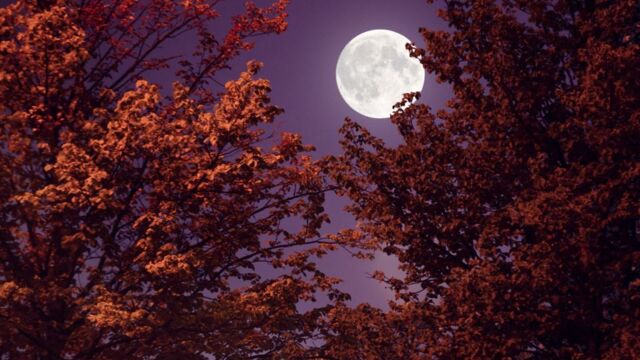One of September's most notable astronomical events is the Harvest Super Full Moon. This will be the last super full moon of the year, with the next one scheduled for... 2024! But why does it bear this strange name,anyway?
Discover our latest podcast
Harvest time
Like all full moons, the Harvest Moon has a name linked to the period in which it takes place. As the Almanac describes in a recent article:
"Harvest Moon" differs from other full moon names in that it is not associated with a specific month, unlike the others. Instead, the Harvest Moon is linked to the date of the autumnal equinox (September 23, 2023), the full moon closest to the equinox being the one that takes the name "Harvest Moon".
With winter just around the corner, it's the perfect time to harvest fruit and vegetables from the fields... in other words, to reap the harvest! What's more, farmers of yesteryear could count on the light of the full moon to help them in their work.
Read more:Here’s everything you need to know about today's Strawberry full moon
A final super full moon
It will also be a 'super full moon', i.e. a larger-than-average full moon. NASA explains :
A "supermoon" occurs when the full moon coincides with the closest point to Earth in its elliptical orbit, known as perigee.
The agency explains that this term has nothing scientific or astronomical about it, but is a good way of describing this type of event.
The Harvest Super Full Moon takes place on September 29. Super full moons occur 3 to 4 times a year, and this will be the last one of the year - the next one will be in August 2024!
The moon is beautiful! 🌠
— 飲み過ぎなしげちゃん (@Shige_tyan) September 27, 2023
On the way home,
The moon in the eastern sky.
Until the harvest moon,
There are only 2 days left🎵
#Moon#Moonviewing#Harvestmoon#tokyopic.twitter.com/DWjxOLA5HP
Read more:Here’s everything you need to know about tonight's Hunter Moon, October 9
This article has been translated from Gentside FR.
Sources used:
NASA: Supermoons
Almanac: What Is the Harvest Moon?















